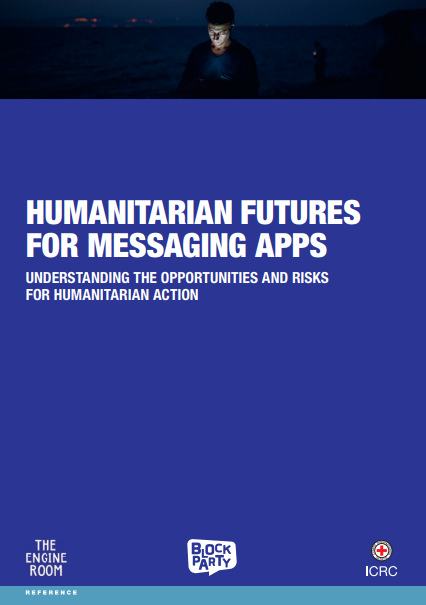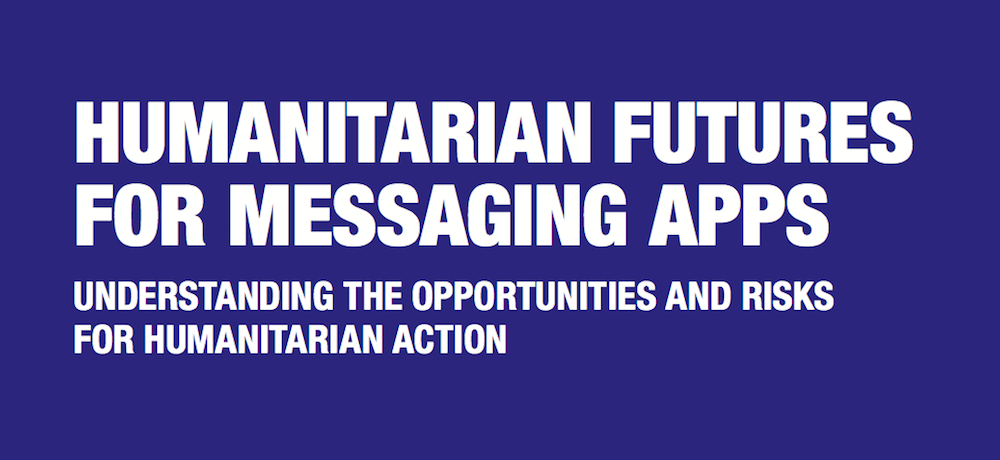Humanitarian Futures for Messaging Apps

I led research on this major project involved in using messaging apps in humanitarian situations through interviews and a scan of existing research on the topic.
I led this major research project, the first to examine the use of messaging apps in conflict-affected areas worldwide.
To do so, I:
- conducted interviews and desk research
- coordinated a team of researchers and an advisory group from staff from the International Federation of Red Cross and Red Crescent Societies (IFRC), the UN High Commissioner for Refugees (UNHCR), the UN Office for the Coordination of Humanitarian Affairs (UNOCHA), and the World Food Programme (WFP)
- coordinated communications activities including an animated explainer video produced by the agency Kurzegesagt.
Messaging apps are the fastest growing form of digital communication ever, with smartphone ownership rising rapidly around the world and messaging becoming many people’s favourite way to communicate.
But what does this mean for humanitarian organisations? This 2017 research report, produced in partnership with the International Committee of the Red Cross (ICRC) and the messaging apps agency Block Party, aimed to find out.

In some situations, messaging apps may be the only way that people caught up in armed conflict or crises can communicate with family, friends or humanitarian organisations. Many messaging apps have features that could help humanitarian organisations to reach people who would otherwise be impossible to contact, or to collect information that would otherwise be inaccessible. This information can save lives.
Some humanitarian organisations have already started using messaging apps to communicate with people and coordinate their activities – and many others are thinking about it. But there’s still a lot that we don’t know.
How and why are people affected by crises or armed conflict actually using messaging apps? When and how is it appropriate to introduce a new technology that not everyone will be able to access? Could communicating with people through these communication channels put them at greater risk?
To find out about these questions and more, we’ve been researching the opportunities and risks involved in using messaging apps in humanitarian situations through interviews and a scan of existing research on the topic.
This report was put together with support from staff from the International Federation of Red Cross and Red Crescent Societies (IFRC), the UN High Commissioner for Refugees (UNHCR), the UN Office for the Coordination of Humanitarian Affairs (UNOCHA), and the World Food Programme (WFP).

Download the report
Or view an online-first version here
The report, based on interviews with more than 40 people working in humanitarian organisations worldwide, looks at global trends in the way that messaging apps are being used, and summarises existing research about how people affected by conflict and humanitarian crises currently use them.
It then focuses on practical implications for humanitarian operations – examining how organisations are currently using messaging apps, as well as the technical challenges that these apps introduce around information management and data analysis. Finally, it looks at responsible data considerations: how introducing an app could bring in new questions related to information security, data protection, protecting users’ privacy and ensuring that they have informed consent and agency over the way that their data is used.
Messaging apps are still a new and relatively untested technology. To develop responsible, effective and safe ways to use them, organisations need to better understand the opportunities and risks they present. This report is designed as a first step in that direction: we hope it can act as a building block for future efforts to improve the effectiveness of humanitarian organisations.